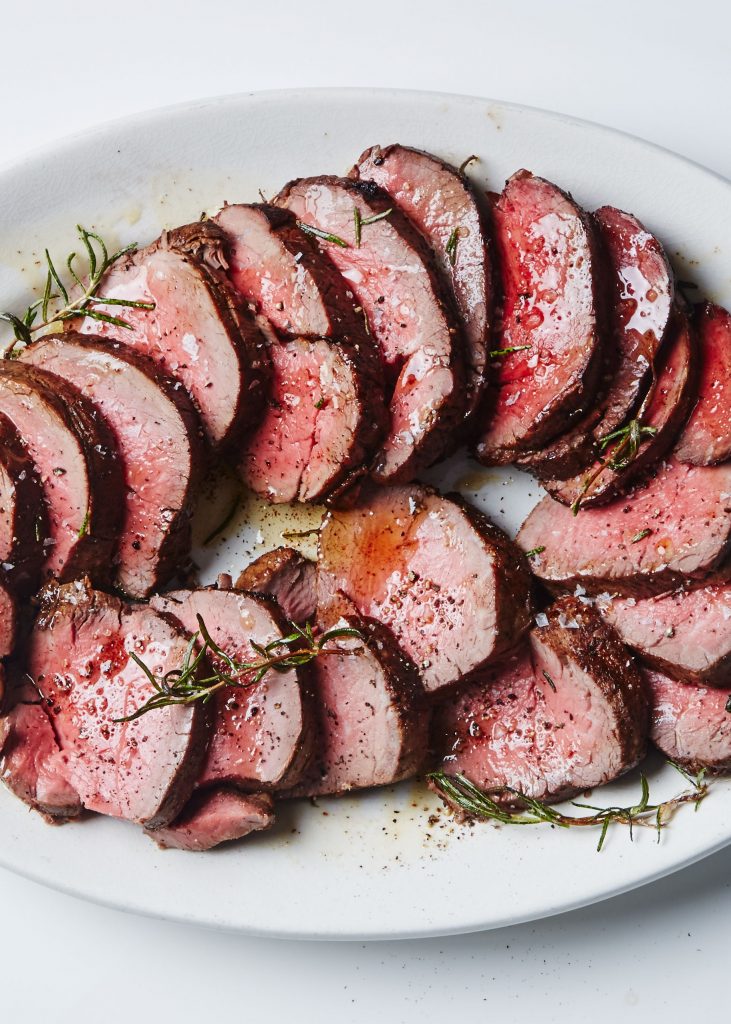What temperature should you cook a beef tenderloin?
Ideally beef tenderloin should be cooked at 135 to 140 degrees for perfect flavor and temperature.
Do you sear beef tenderloin before roasting?
(Tip: You don’t need to sear beef tenderloin before roasting.) Insert an oven-going meat thermometer in the thickest part of the roast. Do not add water to the pan and do not cover the roast. Roast in the preheated oven until the thermometer reaches the doneness temperatures below.
Do you cook beef tenderloin covered or uncovered?
Seasoning beef tenderloin is important because its lower fat content (compared to other cuts such as rib roasts) means less flavor. Roast, uncovered, until desired doneness according to the timings below. Transfer the tenderloin to a cutting board and cover with foil. Let stand 15 minutes before slicing.
Is beef tenderloin a good cut of meat?
Beef tenderloin is widely regarded as the most tender cut of beef, and it’s certainly the most expensive. It’s a portion of the ever-popular T-bone or porterhouse steak, and the upscale filet mignon comes from it as well. These tender steaks do well with a quick stove-top sear before getting finished in the oven.
How do I cook a beef roast without drying it out?
Here’s what I do: I put a rack in the bottom of a roasting pan. Then I place the roast (no rubs or seasonings) on the rack and cover it with a lid. I put it in the oven at 400° for 15 or 20 minutes, then turn it down to 325° and roast for 30 minutes per pound. All it does is end up tough, chewy, and well-done.
Can I sear my beef tenderloin ahead of time?
The sear does not cook the meat; therefore, you can complete it ahead of time. Contrary to popular belief, searing does not prevent a piece of meat from drying out.
Why is my beef tenderloin tough?
Overcooking it. Tenderloin is lean and one of the most tender cuts around, but the lack of fat means that overcooking it will result in dry, tough meat. Follow this tip: Tenderloin is best served rare or medium-rare, so use a thermometer to make sure it doesn’t get cooked past 140°F in the center.
Which is better beef tenderloin or filet mignon?
Tenderloin vs Filet Mignon The difference between tenderloin and filet mignon is that tenderloin is the long portion of the beef run along both the animal spine’s side. On the other hand, filet mignon is a little more tender than the rest; its tenderness is almost indistinguishable.
Why is tenderloin so expensive?
Since these high-end restaurants all over the country are putting filet mignon on their menus, there is less of it available in the market. There are large supply and demand issues related to filet mignon. When it comes to supply and demand, the higher the demand for the product, the higher the pricing is going to be.
How do I cook a beef tenderloin ahead of time?
Place beef tenderloin on a rimmed baking sheet, pat dry with paper towels and season both sides of the meat with Stone House Seasoning. Cover tightly with plastic wrap and refrigerate for one hour or up to 4 days before you plan on cooking and serving.
How long can you keep a beef tenderloin in the fridge before cooking?
For raw ground meats, poultry, seafood and variety meats (liver, tongue, chitterlings, etc.), refrigerate them only 1 to 2 days before either cooking or freezing. Beef, veal, lamb and pork roasts, steaks and chops may be kept 3 to 5 days.

I’m Brian Danny Max, a chef and a writer at cookingtom.com. I’m here to talk about food and cooking, and to share some of my favorite recipes with you all! I’ve been interested in food and cooking since I was a child. My parents are both great cooks, and they taught me a lot about the kitchen. I’ve been cooking professionally for about 10 years now, and I’ve loved every minute of it! I specialize in healthy, flavorful recipes that are easy to make at home. I believe that anyone can cook a delicious meal, no matter their skill level. I’m here to help you learn how to cook, and to show you that it’s not as difficult as you might think! I hope you’ll check out my blog and my recipes, and I look forward to hearing from you!

